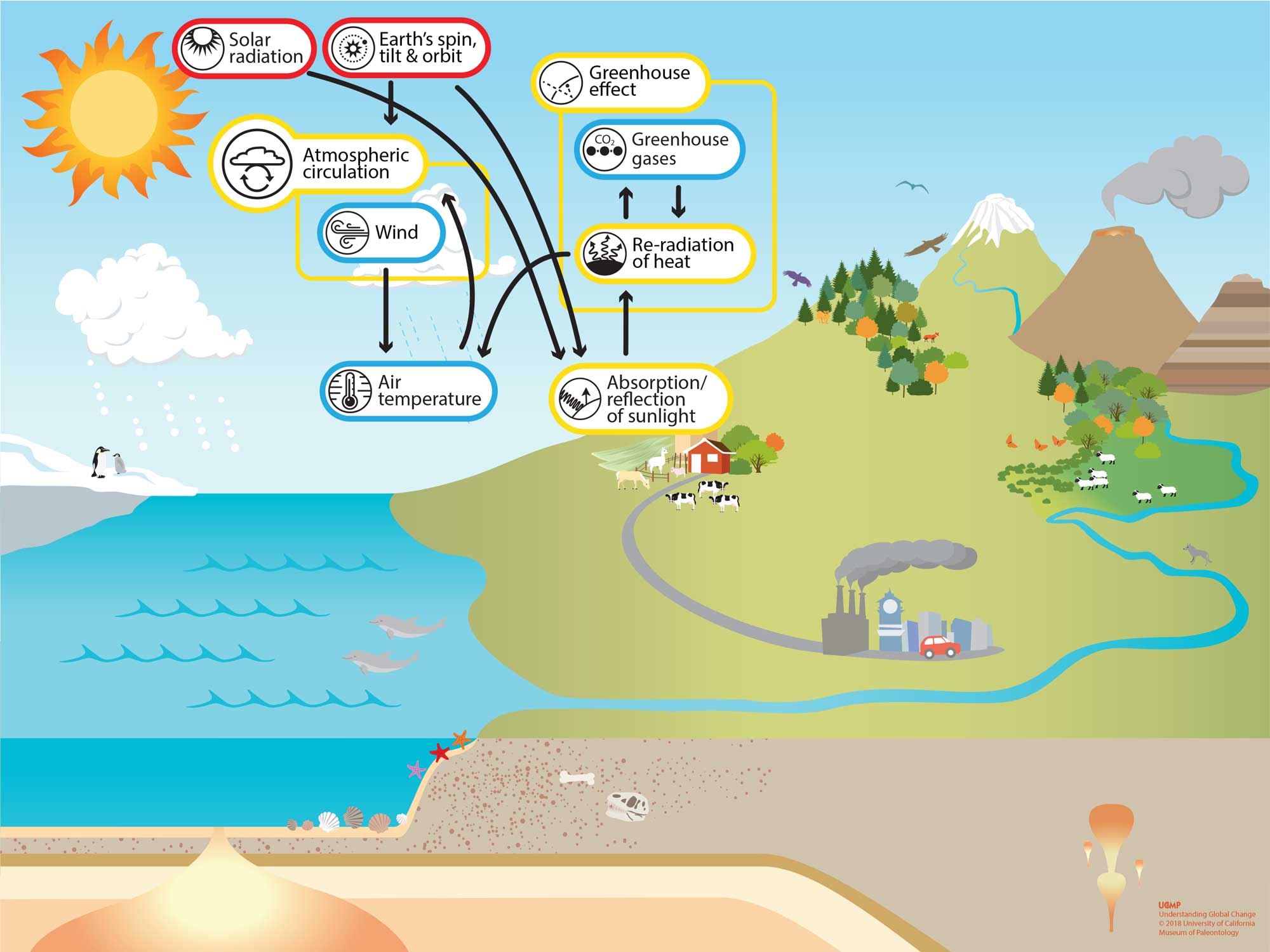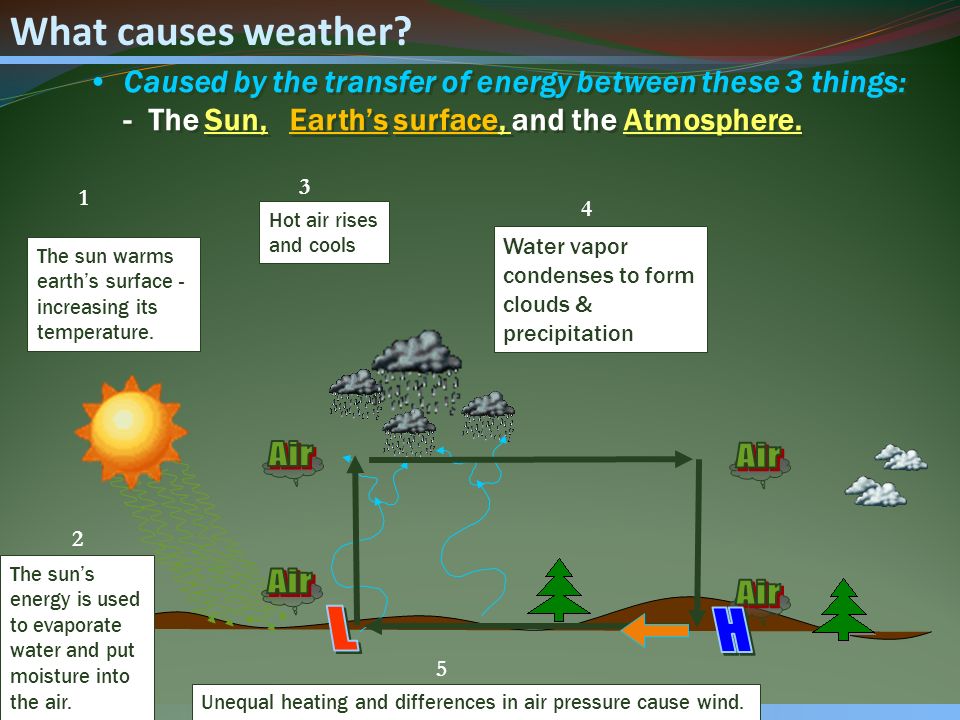Explain How Temperature Difference Result in the Movement of Air
C overuse of limited fresh water resources. 2 b Emma kept environmental conditions like light intensity and temperature the same.

Atmospheric Circulation Understanding Global Change
This equation helps us explain how weather works such as what happens in the atmosphere to create warm and cold fronts and storms such as thunderstorms.
. Convection is the term commonly applied to vertical movement of air whilst advection is used in the context of horizontal displacement of air. Low wind speeds let air remain stationary long enough to take on the features of the source region such as heat or cold. Due to solar radiation and continuous emission of earth surface radiation on abundant surface of ice the air become colder temperature reach to -30 to-60 degree Arctic air moves into south US.
The temperature differential between land and water produces a change in the density of the air over their respective surfaces. - The temperature of the gas is proportional to the average kinetic energy of its molecules. The air pressure rises so temperature rises and humidity falls.
The difference in air temperature is due to differences in the high and low of the area better known as the amplitude. Warmed air expands and becomes less dense than cool air so warmed air near the surface of the Earth rises up. The movement of air across the earth determines the weather and climate of all regions.
Air masses form over large surfaces with uniform temperatures and humidity called source regions. 1 Total for Question 18 5 marks. These differences create convection currents and winds.
The Breeze is generated by the alternating airflow induced by the consequent low pressure. Sunlight or reflected light radiates heat setting up a temperature difference that causes the air to move. When winds move air masses they carry their weather conditions heat or cold dry or moist from the source region to a new region.
Warm air is lighter and it rises upwards meanwhile cold air is denser and hence it moves down to replace the warm air. Air in the troposphere is. It varies in size from hundreds to thousands of miles.
This transfer of heat because of density differences in air is called convection. A Explain the difference in her results. D the result of mass extinctions as human civilization spreads.
The winds blow across the Southwestern deserts and then race downhill and westward toward the ocean. Explain how the motion of the air molecules caused the pressure in the container to change as the temperature decreased. The movement of air from warm to cold areas causes a rotation of air or wind.
Air moves because of differences in heating. Figure below shows how this happens. When we go to the lowlands like the beach we will feel that the air feels hot and becomes very cold when we are in the highlands like mountains and mountains so we need to wear thick clothes to warm the body.
Likewise cold air has less energy and therefore exerts. A Movement of air due to differences in temperature between two locations is known as convection or advection. E changes in the Suns energy.
These are her results. As we all know that warmer air is lighter than the cooler air and as a result the warmer air goes up which means here the warmer air is above the land and this will rise up and the coller air is flowing towards the land surface and taking the space of the warmer air. What causes the movement of air.
B the use of radioactive elements for energy and as weapons. For example if air pressure increases the temperature must increase. People who live near the shore get cold sea breezes during the day and warm land breezes at night.
A simple example of convection currents is warm air rising toward the ceiling or attic of a house. This phenomenon creates wind. 2 ii Why was it important to keep the temperature the same.
The physical movement must be a result of the heating such as with the pot of boiling water where the vertical movement is caused by the intense heat applied to the bottom of the pot. And the liquid can be converted into a gaseous state or vapour state. The movement of air is mainly caused by the differences in pressure and temperature.
This happens when the temperature of air is increased. The high pressure forces winds downhill and in a clockwise direction because of Coriolis. Because the ocean water isnt moving into or through the atmosphere as a result of the suns heating of the water convection isnt the process influencing air and water temperature.
Air mass is the meteorological term for a volume of air with a constant temperature and humidity covering an area. - Faster moving particles will collide with the container walls more frequently and with greater force. A the burning of fossil fuels.
It remains positioned over a region for extended periods and as a result takes on the characteristics of the surface it covers. How does Temperature Affect the Movement of Particles Effect of Temperature Change By increasing the temperature by heating a solid can be converted into the liquid state. If air pressure decreases the temperature decreases.
Gravity creates air pressure through the compression of the atmosphere. Warm air molecules have more energy so they move faster and create more pressure. Polar air masses Polar air masses a little bit farther from the poles like in Siberia Canada and the northern Atlantic and Pacific Oceans.
Cooler air from above sinks and air moves horizontally to replace the rising warm air which we experience as wind over the surface of the Earth. I Why was it important to keep the light intensity the same. Warm air is less dense than cool air so it rises.
The force that creates these changes in air pressure is known as the Pressure Gradient Force and is driven by changes in the temperature of the earths surface. Wind is an example of a convection current.

How Does Temperature Affect The Atmosphere And Cause Weather Socratic
No comments for "Explain How Temperature Difference Result in the Movement of Air"
Post a Comment